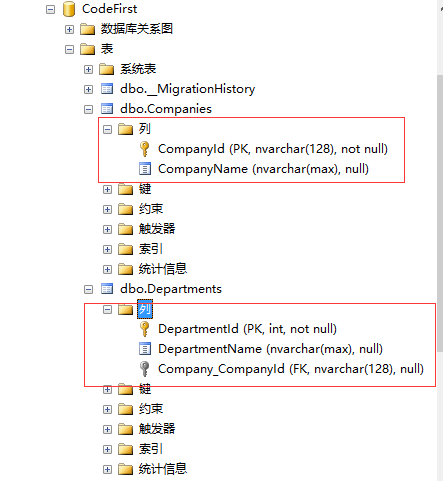尽可能做到不说一些晦涩难懂的语言,Follow Me......
环境:Visual Studio 2013+.Net Framework 4.5
1.什么是Code First?

说白了就是先建好C#类,利用EF数据库上下文去生成数据库和数据,从数据库驱动的思想转变为代码驱动
Code First主要使用DDD领域驱动设计思想
废话也不多说了......
2.安装EF:


3.新建类
公司
public class Company
{
public string CompanyId { get; set; }
public string CompanyName { get; set; }
public ICollection<Department> Departments { get; set; }
}
部门
public class Department
{
public int DepartmentId { get; set; }
public string DepartmentName { get; set; }
}
现在,领域类我们已经创建完毕,接下来创建DbContext
public class DemoContext : DbContext
{
public DemoContext() : base("name=DemoContext") { }
public DbSet<Company> Companys { get; set; }
public DbSet<Department> Departments { get; set; }
}
接着配置config连接字符串回到主程序
<add name="DemoContext" connectionString="server=.;uid=sa;pwd=1230;database=CodeFirst" providerName="System.Data.SqlClient"/>
这里记得字符串中一定要有providerName
回到主程序
using System;
using System.Collections.Generic;
using System.Linq;
using System.Text;
using System.Threading.Tasks;
namespace CodeFirst_Section1
{
class Program
{
static void Main(string[] args)
{
using (var db = new DemoContext())
{
Company compay = new Company
{
CompanyName = "南京某某科技有限公司"
};
db.Companys.Add(compay);
db.SaveChanges();
}
Console.ReadKey();
}
}
}
查看数据库生成的表结构

End.







 本文介绍如何使用Entity Framework (EF) 的CodeFirst方法从C#类生成数据库。通过具体实例展示了领域驱动设计(DDD)思想的应用,并提供了创建数据库上下文类、配置连接字符串及执行数据库操作的完整步骤。
本文介绍如何使用Entity Framework (EF) 的CodeFirst方法从C#类生成数据库。通过具体实例展示了领域驱动设计(DDD)思想的应用,并提供了创建数据库上下文类、配置连接字符串及执行数据库操作的完整步骤。
















 281
281

 被折叠的 条评论
为什么被折叠?
被折叠的 条评论
为什么被折叠?








